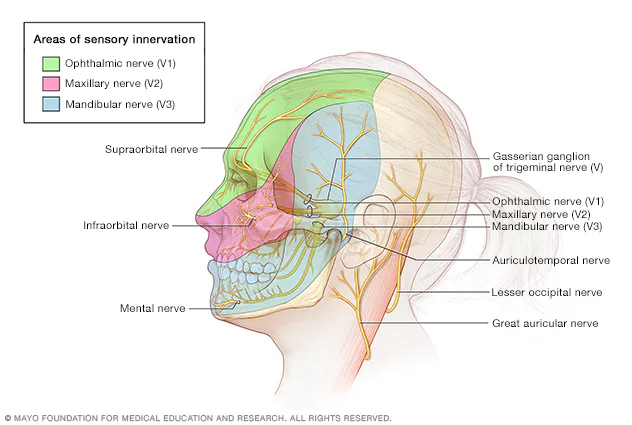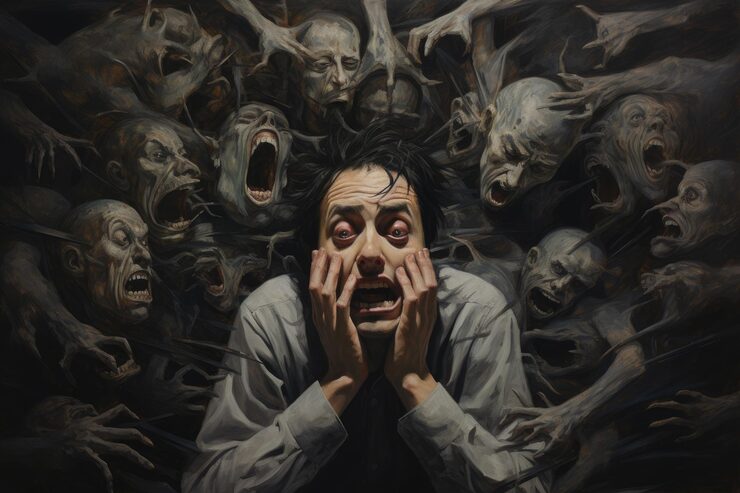- First RTC (1930): Congress absent
- Second RTC (1931): Gandhi attends, fails to secure terms
- Ramsay MacDonald’s Communal Award (1932)
- Gandhi’s fast against separate electorates for Dalits
- Poona Pact: joint electorates, reserved seats for depressed classes
First RTC (1930): Congress absent
The First Round Table Conference (RTC) took place in London from November 12, 1930, to January 19, 1931. It was the first of three conferences aimed at discussing constitutional reforms in India and involved various Indian political leaders along with British officials. Here’s a structured explanation of the conference, particularly noting the absence of the Indian National Congress (INC):
Context
- Background: The First RTC emerged from a growing demand for constitutional reform in India, fueled by the Indian independence movement. The British government sought to engage Indian leaders in discussions about self-governance while maintaining control over the process.
- Demand for Representation: Various Indian political factions, including the Muslim League, Hindu Mahasabha, and others, were eager to represent their interests in the proposed constitutional framework.
Key Features of the First RTC
- Participants: The conference included representatives from various political parties and groups such as the Muslim League, the Sikh community, and the Indian Liberal Federation. Notable figures included Muhammad Ali Jinnah, B.R. Ambedkar, and others.
- Agenda: The main agenda revolved around discussing the future governance of India, potential reforms, and the structure of a new constitution. Topics included representation, provincial autonomy, and the rights of minorities.
Absence of the Indian National Congress
Decision to Boycott: The Indian National Congress, which was the most significant political force in India at the time, chose to boycott the First RTC. This decision stemmed from several factors:
- Discontent with British Policies: The Congress was dissatisfied with the British government’s response to their demands, including the failure to address issues raised during the civil disobedience movement initiated in 1930.
- Demand for Full Independence: The Congress leadership, particularly under Mahatma Gandhi, was advocating for complete independence rather than incremental reforms, making participation in what they viewed as a limited dialogue unacceptable.
- Call for a United Front: The Congress believed that any negotiation would be meaningful only if all major political factions participated together, which they felt was undermined by the British approach.
Impact on Discussions: The absence of the INC significantly affected the dynamics of the conference:
- Lack of Comprehensive Representation: The discussions were seen as incomplete and unrepresentative of the broader Indian political aspirations, as the Congress represented a substantial section of the Indian populace.
- Limited Outcomes: Without the Congress’s involvement, the outcomes of the First RTC lacked legitimacy and failed to address the pressing demands of the majority of Indians seeking self-rule.
Second Round Table Conference (1931): Overview
The Second Round Table Conference (RTC) held in London from September 7 to December 24, 1931, was a crucial event in the Indian independence movement. It followed the First RTC and was marked by the participation of Mahatma Gandhi, representing the Indian National Congress (INC). Despite the high hopes for negotiations, the conference ultimately failed to secure substantial agreements regarding India’s future governance.
Participants
Notable Participants:
- Mahatma Gandhi: Leader of the Indian National Congress, who attended the conference after the failure of the first.
- Muhammad Ali Jinnah: Representing the Muslim League.
- B.R. Ambedkar: Representing the depressed classes.
- Other regional leaders and representatives from various political factions.
Gandhi’s Participation
- Context of Attendance: Gandhi attended the Second RTC following significant political developments, including the launch of the Civil Disobedience Movement in response to the British government’s refusal to engage meaningfully with Indian aspirations.
- Objectives: Gandhi aimed to secure terms that would grant greater autonomy and rights for Indians, emphasizing the need for a constitutional framework that reflected the aspirations of the Indian populace.
Challenges and Failures
- Diverse Political Interests: The conference faced challenges due to the diverse political interests represented. Different groups had conflicting demands, making consensus difficult.
- Lack of Compromise: While Gandhi sought to negotiate on behalf of the INC, other leaders, particularly Jinnah and Ambedkar, had their own agendas that complicated discussions. Jinnah insisted on safeguards for Muslim representation, while Ambedkar focused on the rights of the depressed classes.
- British Government Stance: The British authorities were reluctant to concede significantly to Indian demands, insisting on maintaining control over key aspects of governance. They proposed limited reforms that did not meet the expectations of Indian leaders.
- Outcome: Ultimately, the conference failed to produce any satisfactory agreement, leading to a sense of disillusionment among Indian leaders and the public.
Significance
- Impact on the Independence Movement: The failure of the Second RTC highlighted the deep divisions within Indian politics and the challenges of negotiating with colonial powers. It also intensified the resolve of the INC to pursue further civil disobedience actions.
- Prelude to Further Developments: The unsuccessful outcomes of the conference set the stage for continued protests and movements in India, including the eventual introduction of more direct action against British rule.
Ramsay MacDonald’s Communal Award (1932)
The Communal Award, announced by British Prime Minister Ramsay MacDonald on August 16, 1932, was a significant development in the context of British colonial rule in India. It aimed to address the political representation of various communities, particularly minorities, but also sparked controversy and division within Indian society.
Background
- Historical Context: The Communal Award arose from the increasing tensions between different religious and social communities in India during the early 20th century. British colonial policy often exacerbated these divisions, leading to calls for greater representation and rights for minorities.
- Round Table Conferences: The award was a response to discussions at the Round Table Conferences, where issues related to political representation were central topics. The British government sought a solution to the communal tensions that had been escalating, particularly between Hindus and Muslims.
Provisions of the Communal Award
- Separate Electorates: The Communal Award introduced separate electorates for various communities, including Muslims, Sikhs, Christians, and others. This meant that members of these communities would elect their representatives independently, thereby entrenching communal identities in the political process.
- Representation for Depressed Classes: One of the notable aspects of the award was its provision for the representation of the “Depressed Classes” (a term used at the time to refer to lower castes, including Dalits). B.R. Ambedkar was a prominent advocate for their rights and played a significant role in the discussions surrounding the award.
- Extended Franchise: The award extended the franchise to a broader segment of the population, allowing more Indians to participate in elections. However, the system of separate electorates limited the potential for unity across communities.
Controversy and Reactions
- Opposition from Congress: The Indian National Congress vehemently opposed the Communal Award, arguing that it promoted division and sectarianism rather than fostering national unity. The INC’s leadership believed that a unified electorate was essential for the country’s progress towards independence.
- Support from Minorities: While the Congress opposed the award, many minority groups welcomed the provisions for separate electorates as a means to safeguard their political rights and interests. The Muslim League, led by Jinnah, viewed the award as a recognition of Muslim identity and rights.
- Ambedkar’s Position: B.R. Ambedkar initially supported the separate electorates for the Depressed Classes but later faced criticism for not advocating for a more integrated approach. His stance reflected the complexities of negotiating rights within a fragmented communal landscape.
Impact and Legacy
- Deepening Communal Divide: The Communal Award contributed to deepening divisions among communities in India. By institutionalizing separate electorates, it reinforced communal identities and made consensus-building more challenging.
- Prelude to Future Conflicts: The award set the stage for future communal tensions and conflicts, particularly during the lead-up to independence. The divide between Hindus and Muslims became more pronounced, culminating in events such as the partition of India in 1947.
- Impact on Political Strategies: The award influenced the strategies of various political parties, with the Muslim League increasingly advocating for Muslim nationalism and separate statehood, while the Congress sought to unify nationalist sentiments across communities.
Gandhi’s Fast Against Separate Electorates for Dalits
Mahatma Gandhi’s fast against separate electorates for Dalits in 1932 was a significant event in the Indian independence movement, reflecting his deep commitment to social unity and the eradication of untouchability. This fast was not just a personal act of protest but a strategic political maneuver aimed at addressing the socio-political dynamics of the time.
Background Context
- Separate Electorates: The concept of separate electorates emerged as a means to provide distinct political representation for various communities in India, particularly after the introduction of the Government of India Act 1919 and further discussions in the Round Table Conferences. The Communal Award announced by Ramsay MacDonald in 1932 proposed separate electorates for Muslims, Sikhs, and also for the Depressed Classes (Dalits), which Gandhi opposed vehemently.
- Gandhi’s Philosophy: Gandhi believed in the idea of a united India where all communities could coexist harmoniously. He viewed separate electorates as a divisive measure that would deepen communal tensions and undermine the struggle for independence. His commitment to the upliftment of the Dalits, whom he referred to as “Harijans” (children of God), was central to his vision of social reform.
The Fast: Details and Motivations
Announcement of the Fast: On September 20, 1932, Gandhi announced his fast unto death in response to the provisions of the Communal Award that granted separate electorates to Dalits. He began the fast on September 20, 1932, and it lasted until October 26, 1932.
Rationale Behind the Fast:
- Opposition to Division: Gandhi viewed separate electorates as a way to institutionalize division among communities, which he believed would hinder the progress towards a united India.
- Call for Social Unity: He sought to promote social unity and integration rather than segregation, arguing that separate electorates would perpetuate the existing caste system and societal inequalities.
- Empowerment of Dalits: While he recognized the need for political representation for Dalits, Gandhi believed that this should be achieved within a joint electorate framework to encourage cooperation and solidarity among all Indians.
Reactions and Impact
- Public Response: Gandhi’s fast garnered immense attention across India and internationally. It mobilized public opinion and generated significant sympathy for his cause. Many saw his fast as a moral stand against injustice and a call for social reform.
- Political Pressure: The fast put considerable pressure on both the British government and Indian political leaders. The British authorities were concerned about the potential unrest that could arise from Gandhi’s death, while leaders from various communities were compelled to reconsider their positions on separate electorates.
- Negotiations: The fast led to negotiations between Gandhi, representatives of the Depressed Classes, and British officials. It ultimately prompted discussions on how to ensure adequate representation for Dalits without resorting to separate electorates.
Outcome: Poona Pact
- Poona Pact (1932): The fast culminated in the Poona Pact, an agreement reached on September 24, 1932. The pact resulted in the following key provisions:
- Joint Electorates: The agreement established a system of joint electorates for Hindus and Dalits, thereby eliminating the separate electorates initially proposed in the Communal Award.
- Reserved Seats: The pact provided for reserved seats for Dalits in legislative bodies, ensuring that they had adequate representation while still participating in a unified electoral process.
- Significance of the Poona Pact: The agreement marked a pivotal moment in the struggle for Dalit rights and was a testament to Gandhi’s influence as a leader. It balanced the need for political representation with Gandhi’s vision of social unity.
Legacy
- Impact on Dalit Rights Movement: Gandhi’s fast and the resulting Poona Pact played a crucial role in shaping the discourse around Dalit rights in India. While it addressed some immediate concerns, it also sparked ongoing debates about the best ways to achieve social justice and equality.
- Continued Struggle: The events surrounding the fast highlighted the complexities of caste politics in India and set the stage for future movements advocating for Dalit rights and the abolition of untouchability.
Poona Pact (1932)
The Poona Pact, signed on September 24, 1932, was a crucial agreement between Mahatma Gandhi and Dr. B.R. Ambedkar concerning the political representation of the Depressed Classes (Dalits) in British India. This pact emerged from the context of communal tensions and the proposals laid out in the Communal Award, which had granted separate electorates for the Depressed Classes. The Poona Pact sought to address these issues through joint electorates and reserved seats, marking a significant development in the struggle for social justice and political rights in India.
Background Context
- Communal Award (1932): The Communal Award, announced by British Prime Minister Ramsay MacDonald, proposed separate electorates for various communities, including Muslims, Sikhs, and the Depressed Classes. While intended to ensure representation, it was seen by many, including Gandhi, as a divisive measure that would exacerbate communal tensions.
- Gandhi’s Opposition: Gandhi opposed the idea of separate electorates for Dalits, advocating instead for their integration into a joint electorate system, which he believed would foster unity among Hindus and eliminate the stigma associated with untouchability.
- Ambedkar’s Position: Dr. B.R. Ambedkar, a leading advocate for the rights of the Depressed Classes, initially supported the separate electorates as a means to secure political rights and safeguard the interests of Dalits. The tension between Gandhi’s vision of unity and Ambedkar’s demand for specific rights set the stage for negotiations.
Key Provisions of the Poona Pact
Joint Electorates:
- The Poona Pact established a system of joint electorates for Hindus and the Depressed Classes. This meant that all voters, regardless of caste, would participate in electing representatives from a common electoral pool.
- The rationale behind this provision was to promote social integration and discourage the segregation of communities, aligning with Gandhi’s vision of a united India.
Reserved Seats for the Depressed Classes:
- The pact guaranteed a specific number of reserved seats for the Depressed Classes in legislative bodies. This was designed to ensure that Dalits had adequate representation without resorting to separate electorates.
- Initially, the Poona Pact allocated 148 seats in provincial legislatures for the Depressed Classes, a number that provided them with a voice in the political process.
Provisions for Local Bodies:
- In addition to legislative assemblies, the pact also included provisions for reserved seats for the Depressed Classes in local bodies, such as municipal councils and district boards, enhancing their political representation at various levels of governance.
Recognition of Political Rights:
- The Poona Pact acknowledged the need for political rights for the Depressed Classes while emphasizing their integration into the broader Indian polity. This recognition was significant in advancing the discourse around social justice and equality.
Implications and Impact
- Social Unity vs. Political Representation: The Poona Pact aimed to balance the need for political representation for the Depressed Classes with the goal of fostering social unity across communities. It sought to mitigate the divisive effects of the separate electorates proposed in the Communal Award.
- Strengthening the Dalit Movement: The agreement served as a catalyst for the Dalit rights movement, empowering leaders like Ambedkar to continue advocating for social and political reforms. It highlighted the importance of representation and visibility for marginalized communities.
- Political Dynamics: The Poona Pact influenced the political landscape in British India, as it redefined the relationship between different communities and political parties. It encouraged a focus on collaborative politics rather than sectarian divisions.
- Legacy: The Poona Pact is often viewed as a landmark moment in the history of India’s struggle for social justice. It laid the groundwork for future constitutional provisions aimed at safeguarding the rights of Scheduled Castes in post-independence India.
MCQ:-
Question -1
Which of the following statements best describes the significance of the Poona Pact of 1932?
( UPSC Prelims 2021)
A. It granted separate electorates to the Depressed Classes.
B. It abolished the reservation of seats for the Depressed Classes.
C. It provided for joint electorates with reserved seats for the Depressed Classes.
D. It denied political representation to the Depressed Classes.
Answer: C. It provided for joint electorates with reserved seats for the Depressed Classes.
Explanation:
The Poona Pact replaced the provision of separate electorates for the Depressed Classes, as proposed in the Communal Award, with a system of joint electorates wherein a certain number of seats were reserved for the Depressed Classes.
Question -2 (UPSC Prelims 2019)
Which of the following events directly led to the signing of the Poona Pact in 1932?
A. The failure of the Second Round Table Conference.
B. The announcement of the Communal Award by Ramsay MacDonald.
C. The launch of the Civil Disobedience Movement.
D. The signing of the Gandhi-Irwin Pact.
Answer: B. The announcement of the Communal Award by Ramsay MacDonald.
Explanation:
The Communal Award, announced by British Prime Minister Ramsay MacDonald in August 1932, proposed separate electorates for various communities, including the Depressed Classes. Mahatma Gandhi opposed this provision and undertook a fast unto death, leading to negotiations with Dr. B.R. Ambedkar and the eventual signing of the Poona Pact.
Question – 3 (UPSC Prelims 2018)
With reference to the Poona Pact of 1932, consider the following statements:
- It provided for separate electorates for the Depressed Classes.
- It increased the number of reserved seats for the Depressed Classes in the legislatures.
- It was signed to resolve the differences arising out of the Communal Award.
Which of the statements given above is/are correct?
A. 1 and 2 only
B. 2 and 3 only
C. 1 and 3 only
D. 1, 2 and 3
Answer: B. 2 and 3 only
Explanation:
- Statement 1 is incorrect: The Poona Pact did not provide for separate electorates; instead, it introduced joint electorates with reserved seats.
- Statement 2 is correct: The Pact increased the number of reserved seats for the Depressed Classes in the legislatures.
- Statement 3 is correct: The Pact was signed to resolve the differences arising out of the Communal Award, which had proposed separate electorates for the Depressed Classes.
Question – 4(UPSC Prelims 2017)
Consider the following statements:
- The Indian National Congress did not participate in the First Round Table Conference.
- Mahatma Gandhi attended the Second Round Table Conference as the sole representative of the Congress.
- The Third Round Table Conference was attended by both the Indian National Congress and the British Labour Party.
Which of the statements given above is/are correct?
A. 1 and 2 only
B. 2 and 3 only
C. 1 and 3 only
D. 1, 2 and 3
Explanation:
- Statement 1 is correct: The Indian National Congress did not participate in the First Round Table Conference.
- Statement 2 is correct: Mahatma Gandhi attended the Second Round Table Conference as the sole representative of the Congress.
- Statement 3 is incorrect: The Third Round Table Conference was not attended by the Indian National Congress or the British Labour Party.








